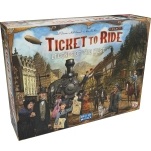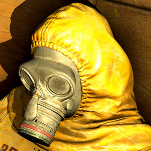Headlander Isn’t Perfect, But Still Head And Shoulders Above The Rest

Headlander puts you in the rocket-powered head helmet of a human being trapped on space stations controlled by robots. The core idea is right in the title: you land your head on things to control them. Elevators move up and down after you dock with them, robot bodies get controlled after you replace their heads with yours, and machines to transcend vast gaps of space are activated by your rocket head energy. This central mechanic works within the general genre of the Metroid-like, by which I mean that your head slowly accrues new abilities that allow you to navigate, or re-navigate, the world based on those abilities. There are enemies, there are bosses, and there’s a science fiction story to work your way through.
All of these mechanical aspects of the game are fine. Not amazing, mind you—there were many, many moments of things not quite working out for me because of wonky design decisions. Walking into a room with a robot body and then being immediately hit with a melee attack will make you walk back into the previous room. Hit boxes for explosive objects are larger than the objects, but there is no particle effect to show that. A visual effect meant for one particular point in time got “stuck,” giving the entire game a gritty, overexposed look until I loaded into a new area via a warp room. The game slowed to single-digit frames while several lasers were firing due to (what I assume was) the game not properly disposing of the laser objects.
I think it’s important to flag all of those basic issues, but I mention them only to say that it’s alright. None of those things get in the way of enjoying the game for more than a couple seconds each, but I also wouldn’t walk into this game expecting a bug-free experience (I imagine that the first major patch will correct most if not all of these issues).
As I wrote before, the game is designed a bit like a Metroid game from the 1990s, but with a heavy dose of puzzle game. Putting your head on enemy robot bodies allows you to shoot enemies and run around, but it also gives you access to different colors of doors. A red robot body opens a red door, a purple body opens and purple door, and Headlander builds many of its puzzles from this basic set of tools. The game is predominately about traversing space to get from point A to point B, and this is always contextualized within a set of decisions and pathways that a player could take. I found this to be really engaging; I enjoyed looking at the in-game map, checking the door colors, and figuring out how to get green bodies to green doors while avoiding being killed by turrets, robots, or my own inability to avoid falling down an elevator shaft.
-

-

-

-

-

-

-

-

-

-

-

-

-

-

-

-

-

-

-

-

-

-

-

-

-

-

-

-

-

-

-

-

-

-

-

-

-

-

-

-








































